 Harlan Ellison’s original teleplay for one of the best Star Trek episodes ever broadcast is finally brought to life by veteran Trek writers and artists from IDW Publishing. Spoilers for the first installment of a five-issue mini-series after the break.
Harlan Ellison’s original teleplay for one of the best Star Trek episodes ever broadcast is finally brought to life by veteran Trek writers and artists from IDW Publishing. Spoilers for the first installment of a five-issue mini-series after the break.
Star Trek: Harlan Ellison’s The City on the Edge of Forever, The Original Teleplay #1 of 5
Original teleplay by Harlan Ellison, adaptation by Scott Tipton and David Tipton, art by J.K. Woodward, letters by Neil Uyetake, edits by Chris Ryall
Story
Two years into a five-year mission, with chronometers running backwards, the Enterprise follows a radiation source to a planet at the galaxy’s rim. In crew quarters, Lt. Lebeque begs another hit of the Jewels of Sound from Beckwith, who wants full details about anything the landing party finds. Lebeque gets his hit, but is so disgusted by his behavior on duty that he threatens to inform on Beckwith. Beckwith bashes Lebeque’s head and runs for the transporter room to escape. Kirk, Spock, Rand and six security crewmembers transport to the planet’s surface. They track Beckwith and the source of the radiation to a time vortex in an ancient city, watched over by the Guardians of Forever. As Kirk and Spock question the Guardians about Earth’s past and realize the staggering importance of this planet, Beckwith makes his move and disappears into the vortex. Stardate 3134.6

Winter is coming!
Review
It’s generally tough to assess how a mini-series will turn out, based only on the first issue. If you aren’t familiar with Harlan Ellison’s original teleplay for The City on the Edge of Forever, you may be alarmed or outraged by events in this issue. I expect cries of “That would never happen on my Enterprise!” to ring out while this comic book is being read. That’s ok. Ellison’s take on how Starfleet personnel react to the stress of deep space missions is very different from any original series episode. That’s the whole point of this project, to visualize Ellison’s story as he wrote it.
I’m pleased that the Tipton brothers, Scott and David, have taken on the job of scripting the comic. Both are seasoned Trek writers and have a keen sense of what works in the Trek universe. I read a version of the original teleplay (there are serveral available) in anticipation of this comic, so I know what to expect going forward, but you don’t have to read the teleplay first. Just know that the Tiptons are illuminating a dark corner of the Star Trek universe and this first issue follows Ellison’s setup to the letter.

Anybody got the time?
I’m equally pleased that J.K. Woodward is the artist for this mini-series. Woodward’s painted art style has been featured in some of my favorite Star Trek comics and I think his work is well suited to Ellison’s vision of Star Trek. In this first issue we are treated to Lebeque’s mind-blowing reaction to the Jewels of Sound, and an exotic cityscape watched over by the cold and majestic Guardians of Forever. Every time IDW publishes a Star Trek comic with painted art, I hear lots of complaints. It doesn’t matter to me. I think Woodward is the perfect choice. The artist posted an interesting process look at the creation of art from issue #1. Check it out if you’d like to see how Woodward creates his painted artwork for comics.
The regular cover for The City on the Edge of Forever #1 is a riff on vintage science fiction paperback covers by Juan Ortiz, an artist who has made a name for himself, reimagining original series Trek with retro-style movie posters. His book, Star Trek: The Art of Juan Ortiz, features posters for every original series episode. Ortiz is bringing the same sensibility to each of the five issues in this mini-series. The subscription cover is drawn by Paul Shipper, known for his work designing movie posters in addition to comics, and features an elegant portrait of Yeoman Janice Rand with Kirk and Spock. If you prefer slightly more traditional comic book cover art, Shipper’s work is outstanding. I’d like to see these comics printed in mass market paperback format with the covers created by Ortiz, just so I can line them up on my bookshelf with the Star Trek Fotonovels and other decades old Star Trek books published by Bantam.
Cover: Art by Juan Ortiz, Subscription Cover: Art by Paul Shipper
Preview of The City on the Edge of Forever #1
Issue #1 also contains an essay by Chris Ryall, Only Time Will Tell: The Making of Harlan Ellison’s City on the Edge of Forever Comic-Book Series. Ryall explains how the project evolved and discusses the creators who were selected to work with Ellison.
The City on the Edge of Forever #1 will be at your local comic shop Wednesday, June 18, and will also be available in digital format.
The Books
The history of late season one episode #28, The City on the Edge of Forever, and the tale of the epic changes to Ellison’s original teleplay, is a contentious and much-discussed element of Star Trek lore, complicated by the author’s legendary prickly personality. This beloved episode also has a lengthy publication history. The broadcast episode was adapted as a short story by James Blish for publication in Star Trek 2 (Bantam, 1968) and as the first Star Trek fotonovel (Bantam, 1977). The fotonovels were published in several languages around the world.
Although scriptbooks with Ellison’s original teleplay exist, the first mass market edition containing a version of the script was published in Six Science Fiction Plays, edited by Roger Elwood (Pocket Books, 1975). The script was accompanied by Ellison’s introduction to the trials and tribulations he encountered while trying to get his script produced. Ellison expanded on the script’s history and published the original script as a limited edition hardcover (Borderlands Press, 1995). The book was reprinted in hardcover and paperback (White Wolf Publishing, 1996). You can also download and read an ebook version (Open Road Media, 2014). If you’re interested in the history of this episode, I don’t think it matters which version you choose to read. This isn’t a complete list of all editions. They’re all interesting, just pick one. Click on the book covers for more information about each book.
Star Trek: The City on the Edge of Forever #2 is scheduled for release July 16. That’s all for now.
Mark Martinez is an obsessive-compulsive Star Trek comics reader and collector. You can visit his website, the Star Trek Comics Checklist for more than you ever needed to know about Star Trek comics.

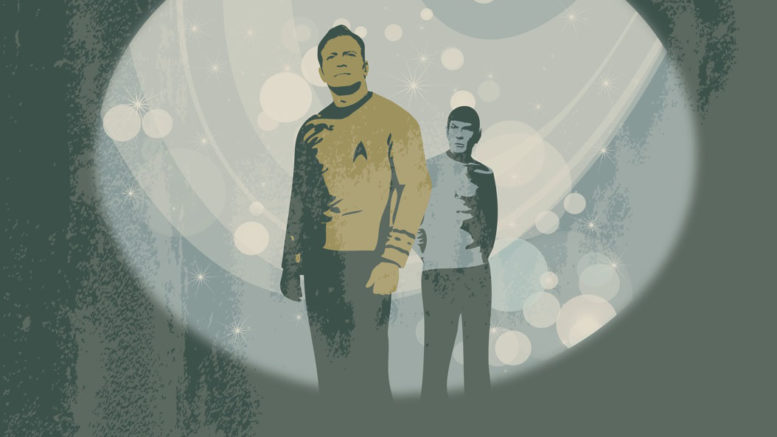










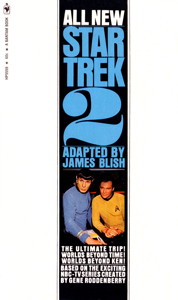



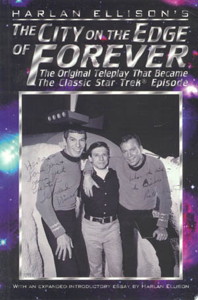
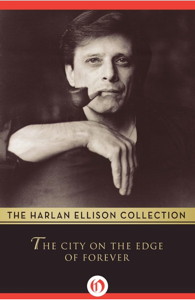
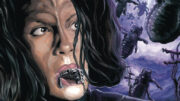
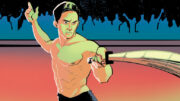
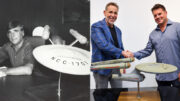
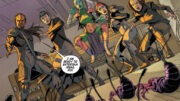
Thank God they filmed it Roddenberry’s way. Ellison’s version was too gritty.
Thanks for the great review, Mark. Thoughtful contributions such as your article are why I love visiting TrekMovie.
Also, glad to see that TrekMovie is experiencing a Renaissance of sorts. I remember months going by without having so many recent articles. Bravo!
Harry Ballz? Doesnt look like the moderator checked out this post. Nice play Mr. Ballz.
I see Harlan Ellison bringing on a law suite ageistTrekMovie.Com.
Excellent article!
Looking forward to this comics series.
Great episode with a lasting icon in the Guardian. Wish it could appear in movies.
Reading Spock:Crucible right now. Can anyone explain “how” he goes back in time via the Guardian to save his seven year old self? I mean he should never have existed to begin with right if he died at 7. Uber confused.
I’ve read the various versions and Roddenberry’s (along with other staff contributions) is the best. In the earliest drafts, Ellison didn’t seem to have much of a handle about what Star Trek was about nor a good grip on it’s characters. That said, his version IS interesting and I’ll probably buy the trade paperback of this series.
I”m also of the opinion that references to illegal drug use (would have) made the Desilu / CBS people squirm and might not and so GR would probably have known that. I have no comment on Ellison’s whole claim on this episode and/or how it was resolved, but it seems to me that we’ve always wanted to believe that the gallant crew of the USS Enterprise, flagship of the Federation’s Starfleet, wouldn’t have declined to the level of psychological health that one of them becomes a complete psychopath and mass murderer.
The belief is that by the 23d Century, we are a better society, not a bitter one.
Correction: I meant to say, “and might not have passed Standards and Practices and so GR would probably have known that.”
It was the late 1960’s, yes, but the networks were around seven years behind the times.
A corrupt Starfleet officer who is selling drugs to fellow crewmen as well as unlucky aliens, and is only interested in getting rich? Yeah OK, it’s easy to see how this has rubbed the Great Bird of the Galxay the wrong way…
#3 – LOL
I love the TOS episode, “The City on the Edge of Forever”. I own and have read each of the books on the left, and have read and learned far more than I ever wanted to about the conflict between Gene Roddenberry and Harlan Ellison. I have also read a great deal about the controversy concerning the original Ellison teleplay versus the broadcast version of the story. For years I was intrigued by the “long lost version” of “The City on the Edge of Forever.” When I first read it more than a decade and a half ago I found his original version interesting, and wished that it had been monetarily possible to retain many of the more fantastic aspects of Ellison’s original story (the gleaming cities, the ancient Guardians, the fantastic time vortex). The reality, however, is that gene Roddenberry was right in almost every aspect of the practical decisions that he made to bring the episode to television in 1967. Money was tight, space was limited, time was extremely limited and Network Standards never would have permitted a story about the sale of illegal narcotics to be filmed or broadcast. Moreover, Harlan Ellison was the one who fundamentally misunderstood the nature of the universe that Roddenberry envisioned. Whether or not you agree with his vision of a culture where man has risen above his vices, this was the universe Roddenberry envisioned and consistently attempted to portray. Ellison’s portrayal or psychopathy, drug abuse and murder on board the Enterprise did not belong in the universe Roddenberry envisioned.
Excellent review and insight into this beloved episode.
Dare I say it but this site appears to be back on top form.
Please keep it going.
#11. Sunspot – June 17, 2014
And yet drug abuse in the form of the controlled substance, alcohol: no problem. Unlicensed and unregulated, and therefore illegal, stills in MCHALE’S NAVY and THE BEVERLY HILLBILLIES:not a deal breaker. THE UNTOUCHABLES blatantly splashing alcohol around in the time period when it was as illegal a drug as it could be — not to mention the Iotians modelling their whole society after that.
Poor Harlan, if he only had the prescience to make Lebeque a violent drunk when high on illegal Romulan Ale. Because, well, you know, even though some Federation citizens are depicted as unable to stop consuming alcohol until drunk: well, at least we can all rest assured that there’s no “drug” problem there.
Harlan Ellison is awesome and his version of the script is fascinating. And he obviously deserves massive credit for his story concept.
But to me the final version is better not because of the drug deals but because it has more heart. In the entire series, is there a more emotionally powerful moment from the Kirk-Spock-McCoy relationship than that instant when McCoy and Jim see each other and hug, just before Edith Keeler’s death?
The Harlan Ellison version is brilliant but by making the conflict about Kirk vs. Beckwith instead of Kirk vs. McCoy, it’s less “in the family” and less of a tragedy. Though the episode gets off to a slightly dorky start with McCoy injecting himself, as a Star Trek fan you just care so much more about McCoy than you do about Beckwidth.
The art in the crewman’s “trip” on “jewels” is fan-freakin-tastic. This is why I love comics.
[Beckwith, though, is portrayed as a big jerk. I’m surprised they didn’t just go ahead and put him in a Red tunic, y’know, so he could fulfill all the stereotypes of the over-muscled meanie jock.]
I really enjoy the painted style. It’s the photoshop painting style I sometimes find fault with [in some of the ongoing series of AltVerse]. The images in which it looks like skin is waxy and about to melt, blugghh.
No sign of that here. It’s straight-up paint style. I look forward to getting the issues in the series. Now we’ll see the Guardians as Ellison imagined them.
Mark, thanks for the link to Martinez’s page. Fascinating and gives a real clue to how patient and practiced these artists are.
CORRECTION Woodward’s page. Sorry, man.
Ellison’s version may be “gritty”, but it’s a lot more realistic than Roddenberry’s utopian vision of humanity. It’s probably why I appreciated “Star Trek: Deep Space Nine” for that very reason. Having said that, I don’t preclude one for the other version, but see Ellison’s as the “novel” version of the television show, and appreciate both for what they are.
Oh, I also like the fact that Yeoman Rand actually does something other than look on. See her in action, after Kirk tells her to act is in keeping with Roddenberry’s vision of men and women being equals (though still relegated to mini-skirts for the women is still off-putting).
This is a great idea to see how it would have worked as Ellison wrote it, and the art is spectacular! That being said, I’m happy with how it was filmed.
While corruption and other seedy dealings would have gone down within Starfleet with the personnel, there is simply no way this would have happened on a starship for any period of time. Sorry. It’s a military organization, and would have dealt with this before it got to Beckwith dealing on a ship, much less killing someone.
@19
dswynne, I appreciate your point of view. I shall consider it.
22 – We could have had Moore’s Battlestar 35 years early.
I too am glad we got the version we got. The E is an ideal. I like that. Later iterations may get darker, but I still like my TOS as a retreat to my childhood hopes and dreams… some of which really exist now, thanks to Trek.
That was aimed at RaveOnEd and some of the others.
Hi, Harry. My, but your Ballz pop up without warning…
#21. RaveOnEd – June 17, 2014
“While corruption and other seedy dealings would have gone down within Starfleet with the personnel, there is simply no way this would have happened on a starship for any period of time. Sorry. It’s a military organization, and would have dealt with this before it got to Beckwith dealing on a ship, much less killing someone.” — RaveOnEd
By “any period of time” do you mean as in the time it takes for criminal activity such as in a crew member faking his own death and hiding out on the ship during and after an ion storm, planting evidence that his commanding officer committed the murder of this “dead” crew member, and that crew member attempting to murder all the participants in said commanding officer’s court martial when its venue is moved to this selfsame starship?
Or do you mean criminal activity like the crew member, Norman, who signed on as a member of Enterprise’s crew even though he wasn’t a member of Starfleet or even a Federation citizen and drew attention to himself by performing his duties so well that he stood out as a sore thumb with the captain knowing him by name just before Norman decided to take over the ship and kidnap its 400+ crew?
And need I remind you that “illegal” Romulan Ale has to be supplied through some means as the replicators can’t seem to produce it (Probably having to do with it’s being illegal.)?
@24 CmdrR “My, but your Ballz pop up without warning”
THAT’S WHAT SHE SAID!
#20 – “in keeping with Roddenberry’s vision of men and women being equals (though still relegated to mini-skirts for the women is still off-putting).”
If you have read anything that Nichelle Nichols said of the time that they were making TOS and the fact that she was one of those wearing the mini-skirts, you would realize that the mini-skirt then was a potent symbol of feminism and of being liberated, sexually and otherwise, from the suffocating patriarchal attitudes that denied so many women so much.
The fact that these TOS crew women wore mini-skirts was anything but “relegation”. It was not then, nor should we see it that form of dress as being such now.
Roddenberry’s vision for Trek was a product of it’s time – what is utopian today, back in the 60’s was nothing more then ‘wonderful, we didn’t disappear in a radioactive ash heap’. While we have shown that we can step back from jumping into the abyss, we still seem to struggle with a slow slide into it, so in todays world, I would expect more darker and grittier sci-fi drama. TV sensibilities would not have allowed Ellison’s screenplay to see the light of day, as others have noted, all his complaining aside, Roddenberry’s version also made for compelling TV, but if we think about it, it’s not the first time Trek probably got modified to reflect someone’s political reality. Trek VI was supposed to be a metaphor for the end of the cold war – in reality freedom prevailed, but in Trek it ended because of an environmental disaster?? Freedom didn’t prevail in TUD, a mining accident did. It begs the question, was it going to offend political sensitivities in the early nineties if Trek VI had shown a strong Federation prevailing, as opposed to the Klingons suing for peace?
@27. At best, it was a mixed message. Trek had no issue showing off female skin, and spoke to equality, but character roles were still very clearly defined as male and female, as opposed to ability. It was a work in progress, to say the least….
#28
Praxis was essentially a stand-in for the Chernobyl disaster, which greatly affected the Soviet Union politically and forced it into closer relations with the West. It was also a factor in its eventual collapse.
I like what Ortiz was trying to do, I just hate the results about 90% of the time.
This cover is one of the 10%
Many, many years ago, while Harlan Ellison was autographing my copy of “Six Science Fiction Plays,” some devil inspired me to quip “Of course, I like the aired version of ‘City’ better”, wherapon the Angry Young Man of Science Fiction tossed my pen into the nearest trash. (The autograph was lost to posterity forever several years later when I was teaching English in Thailand and lost my grip on the back of a pickup truck I was riding in downton Bangkok; it was either the book, or me.)
Ellison’s reaction was no surprise given his reputation, of course; but when happend next was as out-of-character for the both of us as Richard Beckwith selfless act of heroism in saving Edith Keeler’s life. I insisted that he give me my pen back, and, rather than kicking my callow, impudent ass (and perhaps realizing he had gone too far), he began digging through the trash to retrieve it. He had a couple of awesome groupies with him at the time, one of whom sourly told me that she’d give me another pen, for Chrissake, but I was soon handed back my property without further incident. To this day, I have no idea what motivated either of us to act as we did.
Harlan should have known that I was just kidding. Even at the time, I was fully aware of the power of his original vision for “City,” and the intervening years have only convinced me further that, wonderful as the aired version is, much of the story’s essence was lost before the show went in front of the cameras in 1966. Even Bob Justman admitted, after getting many of the revisions he’d asked for, that the show had lost much of its poetry in the process. Getting to see this story brought to life now, even in a different format than originally intended, is a real gift, where Richard Beckwithand a crippled veteran of the first World War named Trooper will be given form and color and life for the first time, a brief sojourn for fans along a road that Star Trek never took. Now that’s an alternate universe scenario I can truly get behind. Maybe I can even get Ellison to autograph my copy.
I remain underwhelmed by Harlan Ellison. Ill tempered and arrogant.
I remain underwhelmed by Harlan Ellison. Ill tempered and arrogant.
32. Michael Hall – June 17, 2014
I feel that it would be remiss at this juncture not to post this great clip of the inimitable Harlan Ellison, particularly for the benefit of anyone who hasn’t seen it. This is classic: https://www.youtube.com/watch?v=mj5IV23g-fE
P.S. I watched the doc on Ellison that this clip comes from, Dreams with Sharp Teeth, in its entirety and quite enjoyed it.
I remember reading “Dangerous Visions,” edited by Harlan Ellison, not too long after it was published. I was a very young person at the time, but I didn’t quite cotton to it. I believed it made very little sense, even in the already-strange world of science fiction.
Ellison was a ground-breaking individual, as were many of his contemporaries, in their artistic sensibilities. So I will, at the very least, give him that. The fact that he was associated with Star Trek, which for all its aspirations to progressive thought, was still a network television program, meant that there had to be something of a conflictual outcome.
It’s interesting to note that Isaac Asimov was also an admirer of Star Trek (as demonstrated in archival documents preserved and publicized by one of Rod Roddenberry’s companies, covered here on TrekMovie.com. For me, Asimov was the archetypal SF writer — almost as much as Arthur C. Clarke. Asimov was also a genuine, bonafide, 100% grade-A scientist, learned in many subjects and literally encyclopedic in his knowledge. The fact that he liked Star Trek a great deal means a lot to me.
The Asimovian way of SF was much in the tradition of the Gernsback or Campbell style, which some deride as pulp, but others look back as part of the Golden and/or Silver Ages of SF. At least that’s my interpretation of it. In this I’m looking through a lens of several decades, concerning the progress of events that had some of its origins just a little less than century ago.
Ellison was clearly not of the Asimovian style, but rather more avant-garde. The content reflected in the “Foundation” series of novels would have been to some extent the antithesis of what I think Ellison wanted to explore as the new frontier of SF literature, in which the psychodynamic intersection with future developments took place in a different place, with different results, along the intellectual continuum. The new style of SF was perhaps also reflected in Frank Herbert’s “Dune,” which had elements of the mystic and fantastical that, at least in my mind, were rarely expressed in “classic” SF.
I have a sense that the sensibility of the viewing public has moved toward the fantasy end of the SF&F spectrum, and has since done so at a more-or-less steady pace since the 1980’s. As science fiction has become science fact in many practical applications, the appetite of the public for the new veers toward nontechnological frontiers, perhaps the most prominent early example was the “X Files.” Today, we have “Game of Thrones,” a work of historical fantasy with no science-fiction overtones, but that occupies a privileged place in the public eye, at least for now.
It is possible that a science fiction series that incorporates the more anarchic view of the progress of humanity is simply more appealing now than SF in the classic tradition. Perhaps this is a reflection of our civilization’s focus on the fearful future, as much as the “hard” SF of the past was patterned on the perceived solidity of scientific progress.
I’m sure there are thousands of theses in folklore and literature that have covered similar ground. But to me, this latest Trek effort does bring forth a pleasant reverie about what SF has done on its own, and in conjunction with cultural currents, and to deserve its place in the popular imagination.
@27 (Keachick): And yet there weren’t mini-skirts depicted in “The Cage” (i.e. “Number One” and Yeoman Colt). If in the regular series there was a mixture pants and skirts that the women wore, then I could agree with your assessment. Remember, choice is just as important as one’s sexuality, as you well know. And while I will always appreciate Ms. Nichols’ contribution to pop culture as an icon, I will stick to my original premise on this.
“Trials and tribulations”? Really? He was a lazy jerk who wanted the paycheck & the recognition, but didn’t want to do the work. He’d hang out at the stage where the show was shot & waste time instead of working (this was after he didn’t seem to get anything done at home for weeks upon weeks…all for a show with deadlines).
Harlan’s attitude & arrogance are his way of compensating for his stature.
The original story would have worked great….if it were not based on another property. Star Trek’s characters had been developed to a point & needed consistency to maintain that growth. Something Harlan has NEVER understood. He’s made a career out of complaining. I used to admire him for his work. Once I realized what kind of person he really was, that admiration turned to disappointment.
A new HD Video of all the DS9 scenes from TNG’s “Birthright”: https://www.youtube.com/watch?v=gR7oewdXp7w
@25 Disinvited:
So, you would set up an apples and oranges argument based on what Finney did, how Norman got aboard Enterprise and the “looking the other way” on having Romulan Ale and equate that with the dealing of illegal narcotics (not just with Starfleet crew but with races the Enterprise visits), privateering and theft on a sustained basis?
Finney’s case was a single event, Norman getting aboard wasn’t as criminal as you’re making it (not much more than a stowaway), and the military has had a history of keeping certain minor things (like Romulan Ale) under their hats since it isn’t an offense worth enforcing apparently.
You equate those with what Beckwith was doing? Really? Fine if you think that way, but for me, I find it hard to believe that it would be allowed to continue on a starship.
The first issue of the comic wasn’t bad but it didn’t really feel like Star Trek. Maybe if it was set during the Enterprise era, or if it was a Ferengi selling the drugs (both concepts that, obviously, hadn’t been invented yet when this was written), then I could accept it, but I can’t imagine a 23rd century Human Starfleet officer doing that kind of thing. That kind of person would never be able to make it through the Academy, and he probably wouldn’t want to anyway.
This story clearly had some problems in its original draft, and I’m glad that those problems were fixed before the story made it to screen.
How many issues in this miniseries?
36. Hat Rick – June 18, 2014
DS9 had some of the Dune-style mysticism, though it was ultimately all presumed to have some scientific basis, e.g. the Bajoran “Prophets” were also referred to as the “wormhole aliens.” Ron Moore’s BSG went totally off the scientific path and into the wilderness of mysticism, not that I don’t love that series, anyway.
It is possible that a science fiction series that incorporates the more anarchic view of the progress of humanity is simply more appealing now than SF in the classic tradition. Perhaps this is a reflection of our civilization’s focus on the fearful future, as much as the “hard” SF of the past was patterned on the perceived solidity of scientific progress.
Interesting point. During the 1940s and up through the 80s, science was highly valued and spurred on in the West in order to feed the technological needs of WWII and the Cold War—the race for the bomb being perhaps the most emblematic example.
Being that science was so highly valued during this period, the US gov wanted to promote science education in order to increase the crops of new, young scientists entering the research and development fields each year. Either partly because of this and/or concurrent with this zeitgeist, science and its technological applications were marketed by companies as the means and way to utopia. New gadgets would spare us needless toil, improve our quality of life and allow us to live longer. And these promises were substantially delivered upon to the people of the West during this period.
With the ending of the Cold War in the late 1980s (officially 1991), so too ended our panicked, life-or-death need to stay technologically ahead of the Soviets. Concurrent with this international political sea change was the realization of political power by a domestic (US) movement which had begun as a consequence of the Civil Rights Act of 1965. The “Southern Strategy,” as it was called (by the Nixon campaign), was basically a realignment of the political parties centered around Southern segregationist Democrats (“Dixiecrats”) who were enraged by their party’s strong opposition to segregation in the South. During the late 60s and 70s, the Dixiecrats, who also tended to be more religious, were folded into the Republican Party which, either concurrently or shortly thereafter, ramped up its strategy of attracting conservative Christians (who tended to be anti-Science), culminating in the “Conservative Coalition” which held power in the US throughout the 1980s and early 90s.
I’m not meaning to get off on a political tangent here at all (believe me); I only mention it as an interesting potential cause of an effect that we’re now noticing in fiction, i.e. the marked shift since the 1980s away from science and into mysticism.
Even after the Republicans lost the presidency beginning in 1993, the US Congress was still strongly representing the Conservative Coalition on the Republican side (and with a few remaining Southern Democrats, like Senator Zell Miller [GA], too). Henceforth and up through today, considerations of US policy on the federal level have revolved significantly around the considerations of a political constituency that is strongly religious and tends to be anti-science. And, absent an existential threat like the Cold War to motivate and fuel scientific progress and technological advancement as a national concern and with scientific progress and tech advancement being impeded by a political faction that, it’s fair to say, devalues science on moral grounds, it’s no surprise that the popular culture has shifted away from science and in the direction of mysticism. Less funding, less research, less discovery, less interest in science.
I think that these international and domestic political considerations are very relevant and at least partially causal, but I also think that people became disillusioned when the utopia promised in the 1950s didn’t materialize and didn’t seem like it was going to any time soon. Gadgets, simply put, cannot solve all of our problems. Also, to give credit to the anti-science conservative Christians, a valid concern had developed by the 1980s—a concern revolving around the existential threat to humanity posed by nuclear armament on a massive scale—that humanity’s technological ability had far exceeded its philosophical knowledge, understanding and self-awareness. Consequently, there was no shortage of support for reigning in scientific R&D, though obviously not all Americans concerned about scientific overreach supported replacing it with conservative Christian religious practice.
#40. RaveOnEd – June 18, 2014
No, one point I am trying to make is that all drug abuse is evil whether it is tacitly approved or not. I’ve dealt with drug abusers first hand in my own family and the most destructive in terms of numbers of lives damaged outside the abuser’s is and was alcohol. And I’m suggesting Kirk’s need to have and imbibe an illegally hard liquor from Romulus is a clear sign that alcoholism may be a bigger problem for Starfleet than the picture Harlan wanted to paint.
I was of draft age during the Vietnam War era and I clearly recall that the U.S. Military of that time, of which Harlan and the show outside of him both tried to reflect in the commentary of their tales, had an abysmal record of trying to stem illegal substance abuse and trafficking.
It was so bad that I recall one reporter suggesting that illegal amphetamine “use” was “unofficially” being “encouraged” by some in command who had “successfully” used it on the troops in WWII.
Paramount Pictures International announced at the CineEurope conference in Spain that Star Trek 3, among tons of other movies, will be released in 2016!
===========================
Paramount Sets ‘Transformers 5,’ ‘Star Trek 3′ and ‘G.I. Joe 3′ For 2016
Although fans are gearing up for the June 27 premiere of Michael Bay’s Transformers: Age of Extinction, Paramount Pictures is already looking ahead to its 2016 sequel.
It’s part of a 2016 slate revealed today at CineEurope in Barcelona. According to The Hollywood Reporter, the studio also plans to release Star Trek 3, G.I. Joe 3, Hansel and Gretel 2, Paranormal Activity 5, Timur Bekmambetov’s Ben Hur, and the return of Eddie Murphy in Beverly Hills Cop.
http://spinoff.comicbookresources.com/2014/06/18/paramount-sets-transformers-5-star-trek-3-and-g-i-joe-3-for-2016/
===========================
After waiting for a whole year, now we know for sure that it is indeed coming in 2016!!!
That should have been “more Asimovian than Ellisonian.” I need a proofreader, or a drink.
The true 50th anniversary though, is November, 27, 2014, 50 years after the first filmed scene of Dr. Boyce with Pike in the captain’s quarters. Here’s hoping Star Trek Phase II and/or Star Trek Continues each make an event of that day.
.
Now, as for Harlan…. this Tipton series gives the original script its due. But as others have said, it never would have fit the original series. Dorothy Fontana did an amazing job adapting Ellison’s script to actually work as filmed. Of *course*, certain elements could have been preserved, but “The Search for McCoy” was much better than a “The Wrath of Beckwith”.
.
Anyway, it’s not like Gene didn’t have drug use in TOS! Do we forget Mudd’s Women!?!? One of the original considered pilot scripts, that dealt with Mudd dealing the Venus drug?
Star Trek Paramount news….
http://www.trektoday.com/content/2014/06/star-trek-3-in-2016/#more-34649
Disinvited: In the 1960s drug use was made even more repugnant by its association with the Vietnam War, when it was made deliberately available to U.S. servicemen to hook them on weed and dope (heroine), effectively removing them as an effective soldier. The effect on American society was profound and extremely harmful.
Further, recall that alcohol, which is demonstrably destructive to individuals, families and society at large, was banned during Prohibition. The unintended consequence was the introduction of the Sicilian mafia and Irish mobsters that destroyed America’s urban society only thirty years earlier. (And for you youngsters, thirty years is nothing to a man in midlife or elder. Those memories would be formative.)
Disinvited – d’oh! I see you are personally acquainted with the Viet Nam era.
A problem with posting before reading all the comments and I hope you’ll overlook it, as my point substantially echos your own!